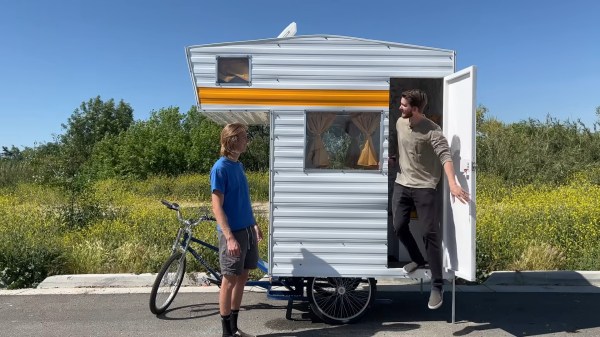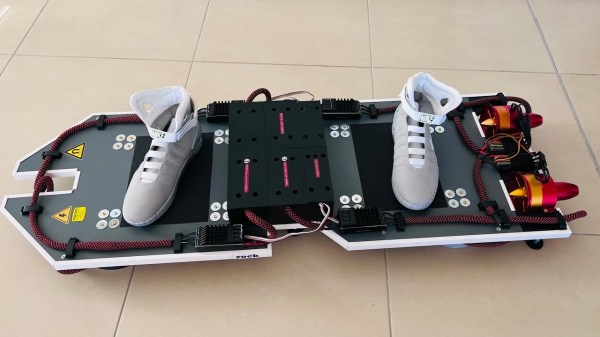As we’re approaching summer here in the Northern Hemisphere, thoughts naturally turn toward road trips. While most people do this in their car, the [Dangie Bros] built a 500 lb bike camper for their own take on the great American Road Trip.
Taking a maximalist approach not seen in most bike campers, this behemoth has a working sink, propane stove, seating area, and an upstairs sleeping area. A small window in the front of the camper opens to let the passenger inside converse with the person pedaling, and a solar panel charges a small battery for lights and a roof fan.
While the camper is very ’70s retro-chic, its lack of assist (other than the passenger getting out to push) meant that on the second day of their road trip they resorted to towing the camper behind a second bike in a pseudo-tandem arrangement. The fold out bed takes some design cues from RVs, but clearly needed more reinforcement since it collapsed partway through the night. With an e-assist and some refinements, this could be comfortable (albeit slow) way to go bike glamping.
If you’d like to try your own hand at a bike camper but do it more aerodynamically and attached to an assisted bike, checkout this teardrop trailer or this bike camper.

















